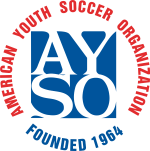Referee/FAQ/RefereeProcedures
FAQ: Referee Procedures
Who is responsible for the players’ Player Registration Forms?
It is the Coach’s responsibility to have the Player Registration Forms at all practices, and games. Referees are not required, nor recommended, to ask Coaches to prove that they have Player Registration Forms in their possession at games. Referees should not require Coaches to produce the forms at matches as this would, in effect, put the Referee in the position of assuming a responsibility that properly belongs to the Coach.
Are Referees required to see a “Participation Release Form” before allowing a player to participate in games following a known serious injury or sickness which required professional medical attention?
No, this is not the Referee’s responsibility.
What is the recommended way to deal with player violence?
Many possible scenarios of violence exist. The Referee must assess each situation, and determine appropriate action considering personal safety, player safety, and game control.
The Laws of the Game do not require anyone to place themselves in peril, and AYSO Referees should not subject themselves to undue personal risk. However, violence needs to be stopped if it erupts, and Referees need to assist in controlling it when it can be done without unduly risking personal safety.
Recommended procedures for Referees:
- Move quickly to the location of the problem.
- Blow the whistle loudly in the vicinity of the fracas to distract the “combatants”.
- Assess the risk to the Referees’ personal safety by further intervention, and do not attempt to intervene if it is unsafe. Referees are not required to put their safety at risk.
- Consider intervention only if possible without undue personal risk. A Referee who intervenes during player violence must:
- Remain in a “passive role.”
- Refrain from physically touching any players or other persons involved.
- Endeavor to form a barrier between “combatants”.
- Urge the Coaching staff to assist.
- Endeavor to contain the fracas.
- Be aware of the reactions of other players, and discourage them from joining the fracas.
- Provide a detailed report of the facts of the incident in the game report for reference.
Addressing violent conduct is everyone’s job. Regional, Area, and Section staff should be proactive in taking steps to address the issue with programs such as Safe Haven, and Kids Zone.
Prompt disciplinary responses are encouraged if violence occurs during matches.
Are there any additional penalties for players or Coaches who are sent off (red card) or spectators who are asked to leave the vicinity of the field because of their behavior?
A mandatory additional one-game suspension is required for any player, substitute, or substituted player sent off (red card). The governing body of the competition may impose additional disciplinary action against any person, including players, Coaches, and spectators, guilty of misconduct.
The Referee is required to provide the appropriate authorities with a match report, which includes information on any disciplinary action taken, and any other incidents that occurred before, during, or after the match. It is the governing body’s responsibility to review the Referee’s match report and to take whatever additional action they feel appropriate.
May players drink water during the game?
Players are permitted to drink water during a stoppage in the play but only on the touchline; they may also do so during play on their touchline if they don’t interfere with active play. It is not permitted to throw water containers onto the field.
If the Referee allows a Coach, parent, or other responsible adult to enter the field to assess an injured player, must that player leave the field, and, if so, when may the player reenter?
Law 5 requires the Referee to stop the match if, in their opinion, a player is seriously injured. Law 5 also requires the Referee to ensure that the player leaves the field of play.
The determination of what constitutes a ‘serious injury’ should take into account the player’s age. The younger the player, the quicker the Referee’s whistle to stop the game. The Referee should then beckon the Coach to come to assess the injured player. If the Referee believes the player is only slightly injured, play should be allowed to continue until the ball is out of play. In this case, the injured player is not required to leave the field of play unless someone has entered to assess the injury.
As soon as it is safe to do so, the person responsible for checking the injured player’s condition must escort the player off the field of play. This allows time for determination of the player’s ability to safely continue playing.
If a goalkeeper is injured but not being substituted, he or she may be treated on the field of play and is not required to leave. Injuries involving a goalkeeper, and another player, and any severe injury to a player such as a concussion, broken leg, swallowed tongue, etc. may also be treated on the field of play.
Before an injured player may return to the field of play, the match must have restarted, and the Referee signaled permission for the player to return. If the ball is in play, entry must be from a touchline; if the ball is not in play entry may be from a goal line or a touchline. The Referee and the Assistant Referees must remain alert as to when the player is ready to return, and the Referee should give permission to return at the earliest opportunity so that the player’s team is returned to full strength.
What procedure should be followed regarding thunder, and lightning storms?
When thunder is heard, it is within striking distance. Seek shelter immediately. Do not wait for the rain to start before seeking shelter, and do not leave shelter just because the rain has ended.
Restart games after no thunder has been heard for 30 minutes or if there is a warning system in place, the community ALL CLEAR SIREN has been sounded.
Many communities and parks systems have lightning detection, and tornado warning systems in place. Obey the rules established at these facilities. When storm warning systems indicate severe weather danger, usually by siren, cease all field activities, and seek shelter immediately.

